Themed collection Soft Matter Lectureship Winners

Solid capillarity: when and how does surface tension deform soft solids?
This Opinion highlights important outstanding questions in the deformation of soft solid interfaces.
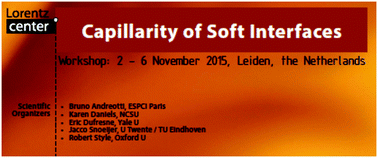
Soft Matter, 2016,12, 2993-2996
https://doi.org/10.1039/C5SM03140K
Steering self-organisation through confinement
In this perspective article, we discuss how soft matter can spearhead efforts to harness confinement as a tool to steer self-organisation across different scales and disciplines.
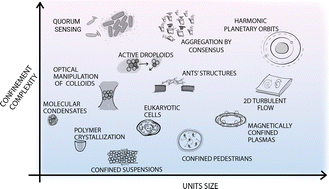
Soft Matter, 2023,19, 1695-1704
https://doi.org/10.1039/D2SM01562E
Microrheology of biomaterial hydrogelators
Small sample volumes, a large dynamic response and short acquisition times make microrheology important for characterizing emerging biomaterial hydrogelators.
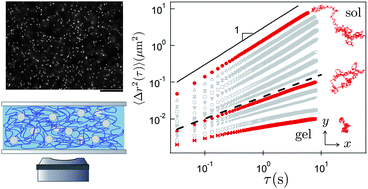
Soft Matter, 2012,8, 6198-6205
https://doi.org/10.1039/C2SM25187F
Nanoemulsions: formation, properties and applications
Nanoemulsions are kinetically stable liquid-in-liquid dispersions with droplet sizes on the order of 100 nm.
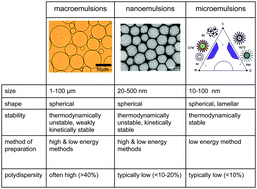
Soft Matter, 2016,12, 2826-2841
https://doi.org/10.1039/C5SM02958A
Multi-scale multi-mechanism design of tough hydrogels: building dissipation into stretchy networks
The general principle for the design of tough hydrogels is to implement mechanisms for dissipating mechanical energy and maintaining high elasticity into hydrogels. A particularly promising strategy for the design is to implement multiple mechanisms across multiple length scales, for example, integrating fiber-reinforcement, high-functionality crosslinkers, and hybrid crosslinkers from macro-scale to nano-scale.
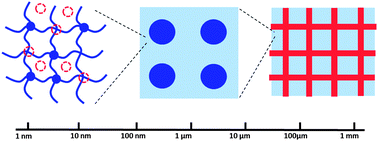
Soft Matter, 2014,10, 672-687
https://doi.org/10.1039/C3SM52272E
Self-assembly of nanoparticles adsorbed on fluid and elastic membranes
In this paper we review recent numerical and theoretical developments of particle self-assembly on fluid and elastic membranes and compare them to available experimental realizations.
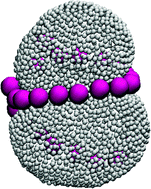
Soft Matter, 2013,9, 6677-6695
https://doi.org/10.1039/C3SM50188D
DNA compaction: fundamentals and applications
We describe the physico-chemical aspects of reversible DNA compaction and its applications in gene regulation, DNA protection and nanostructure fabrication.
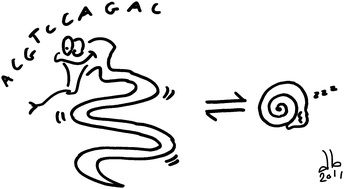
Soft Matter, 2011,7, 6746-6756
https://doi.org/10.1039/C1SM05373F
Traction force microscopy in physics and biology
We review diverse applications of traction force microscopy and provide detailed instructions, including computer code, for performing it.
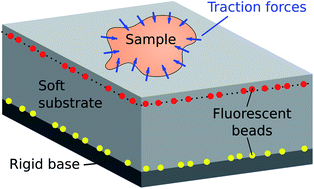
Soft Matter, 2014,10, 4047-4055
https://doi.org/10.1039/C4SM00264D
Avoiding the pull-in instability of a dielectric elastomer film and the potential for increased actuation and energy harvesting
Pull-in instability often occurs when a film of a dielectric elastomer is subjected to an electric field. In this work, we concoct a set of simple, experimentally implementable, conditions that render the dielectric elastomer film impervious to pull-in instability for all practical loading conditions.
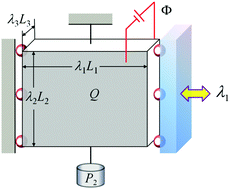
Soft Matter, 2017,13, 4552-4558
https://doi.org/10.1039/C7SM00542C
3D printing of self-assembling thermoresponsive nanoemulsions into hierarchical mesostructured hydrogels
Spinodal decomposition and phase transitions are viable methods to generate a variety of bicontinuous materials. Here, we use 3D printing in conjunction with colloidal self-assembly to create mesostructured hydrogels with tunable micron-sized networks. The rheological properties of the ink and appropriate choice of the photoinitiator are key to printing high fidelity structures.
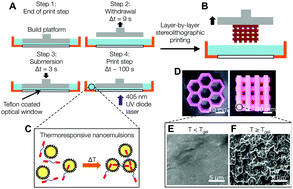
Soft Matter, 2017,13, 921-929
https://doi.org/10.1039/C6SM02208A
Reconfigurable assemblies of Janus rods in AC electric fields
We investigate the electric field-induced assembly of Janus colloids composed of silica rods patterned with gold patches in both side- and tip-coated motifs.
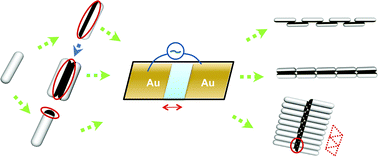
Soft Matter, 2014,10, 1320-1324
https://doi.org/10.1039/C3SM52418C
An extreme toughening mechanism for soft materials
This work utilizes a combined effort of experiment and theory to report a new mechanism and scaling law to account for extreme toughening of diverse soft materials.
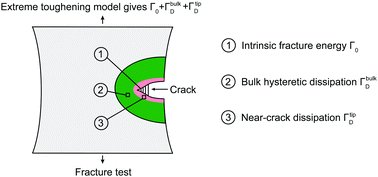
Soft Matter, 2022,18, 5742-5749
https://doi.org/10.1039/D2SM00609J
Modelling the dynamics of vesicle reshaping and scission under osmotic shocks
We study dynamic reshaping of lipid vesicles under osmotic shocks via molecular dynamics simulations. We identified rich morphology transformations, and observed a separation of time scales between the shock absorption and the shape relaxation.

Soft Matter, 2021,17, 3798-3806
https://doi.org/10.1039/D0SM02012E
Supramolecular hydrogels from unprotected dipeptides: a comparative study on stereoisomers and structural isomers
Unprotected dipeptides are studied for self-assembly into hydrogels and single-crystal XRD data reveal key insights in the supramolecular interactions.
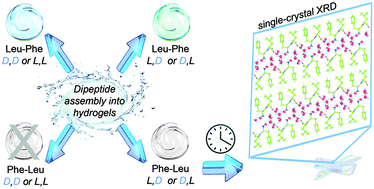
Soft Matter, 2020,16, 10151-10157
https://doi.org/10.1039/D0SM01191F
Localizing genesis in polydomain liquid crystal elastomers
Programming genesis in polydomain liquid crystal elastomers (LCEs) is a differentiated approach to prepare monolithic material compositions with localized, omnidirectional deformation.
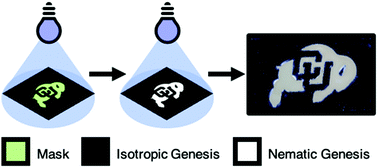
Soft Matter, 2020,16, 330-336
https://doi.org/10.1039/C9SM01923E
Polymer nanocomposite capsules formed by droplet extraction: spontaneous stratification and tailored dissolution
We report the formation of polymeric and nanocomposite capsules via droplet solvent extraction, elucidating the interplay between solvent exchange and removal, demixing and directional solidification kinetics.
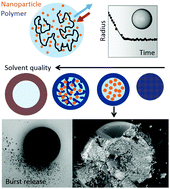
Soft Matter, 2019,15, 5287-5295
https://doi.org/10.1039/C9SM00708C
Surface forces generated by the action of electric fields across liquid films
Oscillating electric fields across electrolyte cause anomalously large forces between the electrodes.
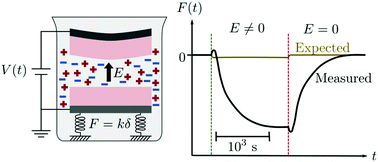
Soft Matter, 2019,15, 4255-4265
https://doi.org/10.1039/C9SM00143C
Ideal reversible polymer networks
This work introduces ideal reversible polymer networks, describes and validates experimentally a theory to relate the network mechanical behavior to the crosslink dynamics.
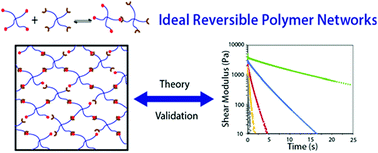
Soft Matter, 2018,14, 5186-5196
https://doi.org/10.1039/C8SM00646F
Kirigami enhances film adhesion
Kirigami enhances film adhesion due to (i) the shear-lag effect of the film segments; (ii) partial debonding at the film segments’ edges; and (iii) compatibility of kirigami films with inhomogeneous deformation of substrates.
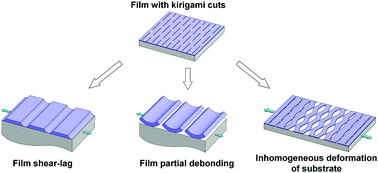
Soft Matter, 2018,14, 2515-2525
https://doi.org/10.1039/C7SM02338C
Effects of polymer–nanoparticle interactions on the viscosity of unentangled polymers under extreme nanoconfinement during capillary rise infiltration
Extreme nanoconfinement increases polymer viscosity and glass transition temperature significantly, whereas polymer–nanoparticle interactions have little influence.
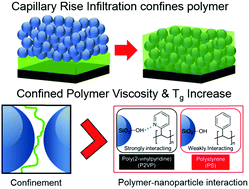
Soft Matter, 2018,14, 2438-2446
https://doi.org/10.1039/C7SM02465G
Multiple particle tracking study of thermally-gelling nanoemulsions
We demonstrate that, by tailoring the MPT probe surface chemistry, we can control the residence of probes in each domain in thermally-gelling nanoemulsions, thus allowing us to independently probe each phase at rising temperatures.
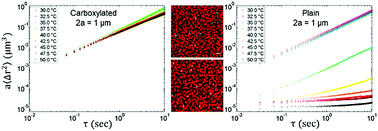
Soft Matter, 2017,13, 6606-6619
https://doi.org/10.1039/C7SM01191A
Nanoconfinement greatly speeds up the nucleation and the annealing in single-DNA collapse
Manipulating and measuring single-molecule dynamics and reactions in nanofluidics is a rapidly growing field with broad applications in developing new biotechnologies, understanding nanoconfinement effects in vivo, and exploring new phenomena in confinement.
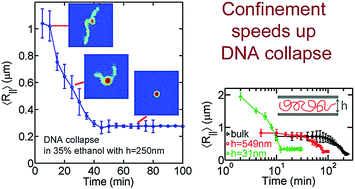
Soft Matter, 2017,13, 6363-6371
https://doi.org/10.1039/C7SM01249G
Blue-shifting tuning of the selective reflection of polymer stabilized cholesteric liquid crystals
We report on electrically-induced, large magnitude (>300 nm), and reversible tuning of the selective reflection in polymer stabilized cholesteric liquid crystals (PSCLCs) prepared from negative dielectric anisotropy nematic liquid crystal hosts.

Soft Matter, 2017,13, 5842-5848
https://doi.org/10.1039/C7SM01190C
Curvature variation controls particle aggregation on fluid vesicles
Physical interactions on membranes with anisotropic shapes can be exploited by cells to drive macromolecules to preferred regions of cellular or intracellular membranes.

Soft Matter, 2017,13, 4924-4930
https://doi.org/10.1039/C7SM00433H
Voxel resolution in the directed self-assembly of liquid crystal polymer networks and elastomers
Monomeric mixtures formulated to prepare a liquid crystal polymer network (LCN) or elastomer (LCE) can be “programmed” by surface alignment to retain complex and arbitrary spatial distributions of the director orientation upon polymerization.
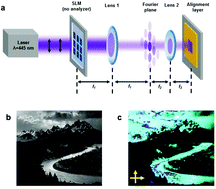
Soft Matter, 2017,13, 4335-4340
https://doi.org/10.1039/C7SM00663B
Hybrid colloidal microswimmers through sequential capillary assembly
Hybrid colloidal microswimmers of programmable shape and composition are prepared by sequential capillary assembly and their modes of motion and functionality are characterized.
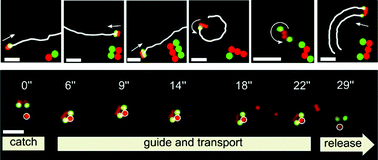
Soft Matter, 2017,13, 4252-4259
https://doi.org/10.1039/C7SM00443E
High-frequency linear rheology of hydrogels probed by ultrasound-driven microbubble dynamics
Ultrasound-driven microbubble oscillations can probe the linear viscoelastic properties of hydrogels. The bubble resonance frequency increases with shear modulus.
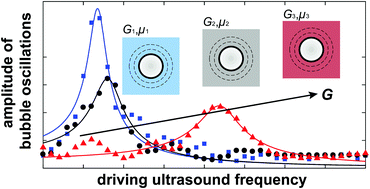
Soft Matter, 2017,13, 3946-3953
https://doi.org/10.1039/C6SM02810A
High-density equilibrium phases of colloidal ellipsoids by application of optically enhanced, direct current electric fields
Highly dense equilibrium assemblies of colloidal ellipsoids having three-dimensional order and packing fraction upto 67%.
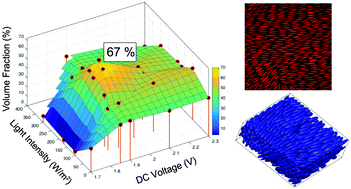
Soft Matter, 2017,13, 3768-3776
https://doi.org/10.1039/C7SM00359E
Tracking particles with large displacements using energy minimization
We describe a method to track particles undergoing large displacements.
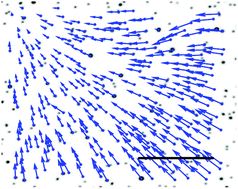
Soft Matter, 2017,13, 2201-2206
https://doi.org/10.1039/C6SM02011A
Maximum likelihood estimations of force and mobility from single short Brownian trajectories
We introduce a new method to extract force and diffusion profiles from short, single trajectories of Brownian particles, even when the dynamical parameters vary spatially.
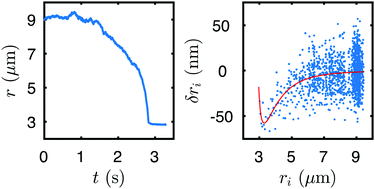
Soft Matter, 2017,13, 2174-2180
https://doi.org/10.1039/C7SM00174F
Effect of internal architecture on microgel deformation in microfluidic constrictions
Through experiments and simulations, we show how microparticle internal structure controls particle deformation during flow through microfluidic constrictions.
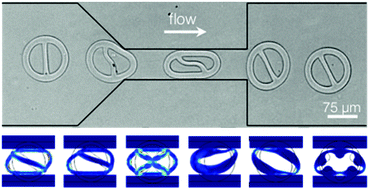
Soft Matter, 2017,13, 1920-1928
https://doi.org/10.1039/C6SM02674E
Shape oscillations of particle-coated bubbles and directional particle expulsion
Ultrasound waves drive shape oscillations of particle-coated microbubbles. During the ultrafast, non-uniform deformation of the interface, particles are expelled from the antinodes of the shape oscillations.
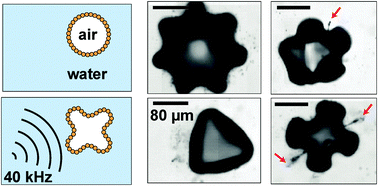
Soft Matter, 2017,13, 125-133
https://doi.org/10.1039/C6SM01603K
Compression of hard core–soft shell nanoparticles at liquid–liquid interfaces: influence of the shell thickness
Hard core-soft shell nanoparticles show a rich structural behavior under compression when confined at a fluid interface and present crucial differences to fully deformable hydrogel particles.
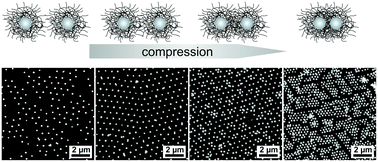
Soft Matter, 2017,13, 158-169
https://doi.org/10.1039/C6SM01020B
Fringe instability in constrained soft elastic layers
A constrained soft elastic layer with comparable thickness and width can undergo a new mode of mechanical instability: fringe instability.
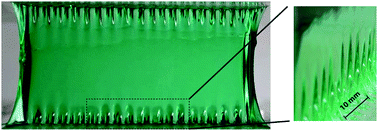
Soft Matter, 2016,12, 8899-8906
https://doi.org/10.1039/C6SM01672C
Melting transition in lipid vesicles functionalised by mobile DNA linkers
Numerical platform validated by experiments allows to predict self-assembly behaviour of liposomes functionalised by ligand–receptors.
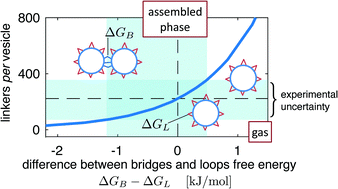
Soft Matter, 2016,12, 7804-7817
https://doi.org/10.1039/C6SM01515H
Particle detachment from fluid interfaces: theory vs. experiments
Theory and experiments show that the contact angles of microspheres at oil–water interfaces can be accurately extracted from AFM force–distance curves.
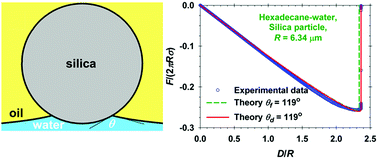
Soft Matter, 2016,12, 7632-7643
https://doi.org/10.1039/C6SM01716A
Mechanical properties of the superficial biofilm layer determine the architecture of biofilms
Cells in biofilms sense and interact with their environment through the extracellular matrix.

Soft Matter, 2016,12, 5718-5726
https://doi.org/10.1039/C6SM00687F
Translocation dynamics of knotted polymers under a constant or periodic external field
Knotted polymers can ratchet through pores under a periodic force if the cycle time and knot relaxation time are comparable.
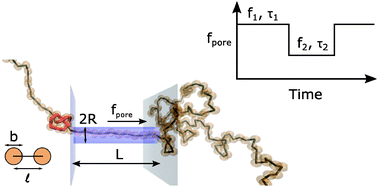
Soft Matter, 2016,12, 5041-5049
https://doi.org/10.1039/C6SM00545D
Surface waves on a soft viscoelastic layer produced by an oscillating microbubble
An ultrasound-driven microbubble undergoing volumetric oscillations deforms a soft viscoelastic layer causing propagation of a surface elastic wave. High-speed video microscopy reveals characteristics of the elliptical particle trajectories that depend on the rheological properties of the layer.
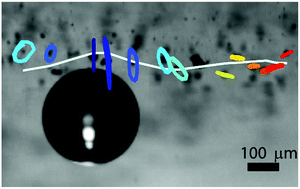
Soft Matter, 2016,12, 4247-4256
https://doi.org/10.1039/C5SM03084F
Isostructural solid–solid phase transition in monolayers of soft core–shell particles at fluid interfaces: structure and mechanics
We investigated the 2D phase diagram of core–shell microgels by simultaneous compression and deposition from a fluid interface and discovered a solid–solid isostructural transition between two hexagonal phases.
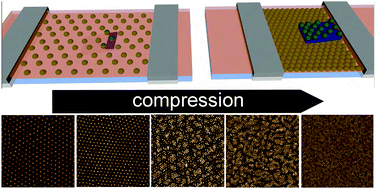
Soft Matter, 2016,12, 3545-3557
https://doi.org/10.1039/C5SM03062E
Controlling and predicting droplet size of nanoemulsions: scaling relations with experimental validation
In this article, we propose and validate a scaling relation to predict the dependence of nanoemulsion droplet size with physical properties such as viscosity of the droplet phase and continuous phase, and process parameters such as input power density.
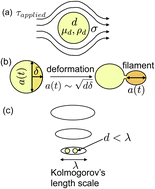
Soft Matter, 2016,12, 1452-1458
https://doi.org/10.1039/C5SM02051D
Photosensitivity of reflection notch tuning and broadening in polymer stabilized cholesteric liquid crystals
The position or bandwidth of the selective reflection of polymer stabilized cholesteric liquid crystals (PSCLCs) prepared from negative dielectric anisotropy (“−Δε”) liquid crystalline hosts can be shifted by applying a DC voltage.

Soft Matter, 2016,12, 1256-1261
https://doi.org/10.1039/C5SM01985K
Celebrating Soft Matter's 10th Anniversary: Sequential phase transitions in thermoresponsive nanoemulsions
We combine confocal microscopy and rheological characterization to show that both percolation and liquid–gas phase separation are dynamically arrested states that support elastic stresses in a colloidal gel.
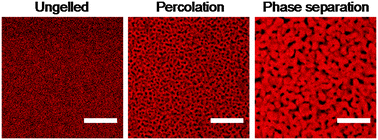
Soft Matter, 2015,11, 8426-8431
https://doi.org/10.1039/C5SM01581B
Kinetics of colloidal deposition, assembly, and crystallization in steady electric fields
We quantify and model the deposition and crystallization kinetics of initially dilute colloidal spheres due to application of a steady, direct current electric field in the thin gap between parallel electrodes.
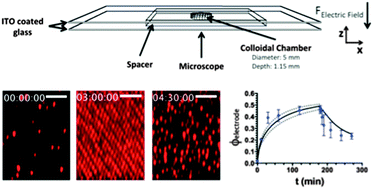
Soft Matter, 2015,11, 3599-3611
https://doi.org/10.1039/C4SM02893G
Stretching self-entangled DNA molecules in elongational fields
Initially self-entangled DNA molecules exhibit drastically different stretching behavior compared to identical molecules without self-entanglements.
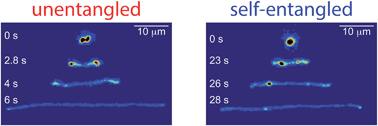
Soft Matter, 2015,11, 3105-3114
https://doi.org/10.1039/C4SM02738H
Surface tension and the mechanics of liquid inclusions in compliant solids
We reformulate Eshelby's theory of composites to account for interfacial tension.
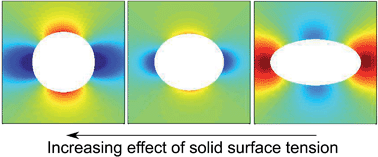
Soft Matter, 2015,11, 672-679
https://doi.org/10.1039/C4SM02413C
A multiscale approach to the adsorption of core–shell nanoparticles at fluid interfaces
Multiscale characterisation highlights the unique behaviour of soft, core–shell nanoparticles at fluid interfaces.
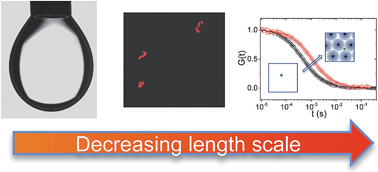
Soft Matter, 2015,11, 118-129
https://doi.org/10.1039/C4SM01881H
Effect of YOYO-1 on the mechanical properties of DNA
Atomic force microscopy studies show that binding of YOYO-1 to DNA increases the contour length of DNA without affecting the persistence length due to the underwinding of DNA.

Soft Matter, 2014,10, 9721-9728
https://doi.org/10.1039/C4SM02025A
Role of shear-induced dynamical heterogeneity in the nonlinear rheology of colloidal gels
We report the effect of flow-induced dynamical heterogeneity on the nonlinear elastic modulus of weakly aggregated colloidal gels that have undergone yielding by an imposed step strain deformation.
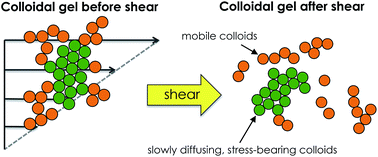
Soft Matter, 2014,10, 9254-9259
https://doi.org/10.1039/C4SM01375A
Highly ordered 2D microgel arrays: compression versus self-assembly
A microgel monolayer at the oil–water interface is prepared using two adsorption methods and visualized by cryo-SEM and AFM methods. Hexagonal microgel arrays of different degrees of ordering are gained.
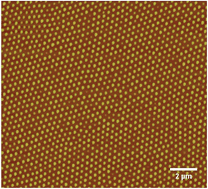
Soft Matter, 2014,10, 7968-7976
https://doi.org/10.1039/C4SM01166J
Synthesis of colloidal microgels using oxygen-controlled flow lithography
We report the synthesis of non-spherical, Brownian microparticles with sub-micron height using a modified flow lithography technique.
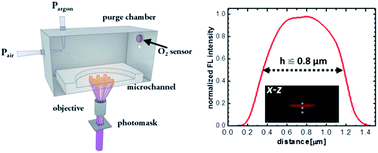
Soft Matter, 2014,10, 7595-7605
https://doi.org/10.1039/C4SM01400F
Design of stiff, tough and stretchy hydrogel composites via nanoscale hybrid crosslinking and macroscale fiber reinforcement
Here we report multi-scale and multi-mechanism design of a new hydrogel composite that contains around 80% water but can achieve an extremely high toughness (>30 kJ m−2), high modulus (>6 MPa), and can be stretched over 2.8 times even in the presence of large structural defects.
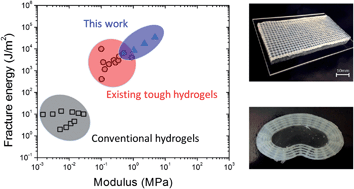
Soft Matter, 2014,10, 7519-7527
https://doi.org/10.1039/C4SM01039F
Self-organizing microfluidic crystals
We use particle shape and confinement to design a suspension that self-organizes into a flowing crystal when driven by pressure.
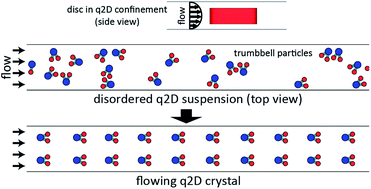
Soft Matter, 2014,10, 5177-5191
https://doi.org/10.1039/C4SM00664J
Directed colloidal self-assembly in toggled magnetic fields
Suspensions of paramagnetic colloids are driven to phase separate and self-assemble by a toggled magnetic field.
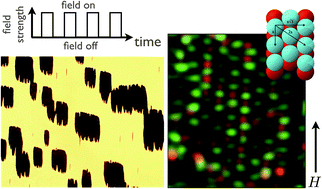
Soft Matter, 2014,10, 1102-1109
https://doi.org/10.1039/C3SM52663A
Torsional mechanical responses in azobenzene functionalized liquid crystalline polymer networks
Soft materials capable of both planar and flexural–torsional responses could enable the development of soft robotic elements that emulate the dexterity and functionality of a multitude of creatures in the animal kingdom.
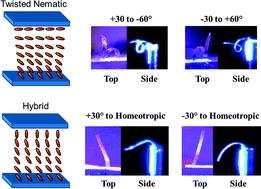
Soft Matter, 2013,9, 9303-9310
https://doi.org/10.1039/C3SM51574E
Preparation of one- to four-branch silver nanostructures of various sizes by metallization of hybrid DNA–protein assemblies
The metallization of DNA–protein nanostar templates leads to branched silver nanostructures with controllable branch sizes and degrees of branching.
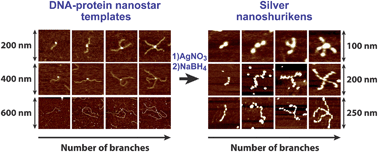
Soft Matter, 2013,9, 9146-9152
https://doi.org/10.1039/C3SM50710F
Collapsing nanoparticle -laden nanotubes
We show how self-assembly of sticky nanoparticles can drive radial collapse of thin-walled nanotubes.
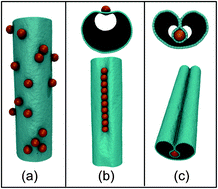
Soft Matter, 2013,9, 8881-8886
https://doi.org/10.1039/C3SM51495A
Core–shell nanoparticle monolayers at planar liquid–liquid interfaces: effects of polymer architecture on the interface microstructure
High-energy X-ray reflectivity (HE-XR) sheds light on the microstructure of core–shell oxide–polymer nanoparticles adsorbed at planar liquid–liquid interfaces.

Soft Matter, 2013,9, 3789-3797
https://doi.org/10.1039/C3SM27367A
Near field capillary repulsion
The article is the first to demonstrate near field capillary repulsion between microparticles with sinusoidal contact lines.
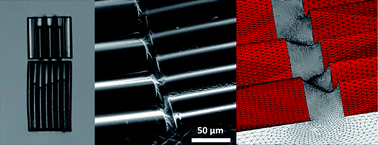
Soft Matter, 2013,9, 779-786
https://doi.org/10.1039/C2SM27020J
In situ rheology of Staphylococcus epidermidis bacterial biofilms
We develop a novel technique to grow and characterize Staphylococcus epidermidis bacterial biofilms in a continuously fed bioreactor incorporated into a parallel plate rheometer.
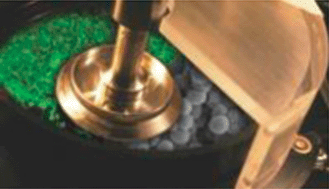
Soft Matter, 2013,9, 122-131
https://doi.org/10.1039/C2SM27005F
Collective dynamics of small clusters of particles flowing in a quasi-two-dimensional microchannel
In collections of flowing particles, ordered states can arise from viscous hydrodynamic interactions. Via theory and simulations, we investigate new collective hydrodynamic behaviors that require a thin channel geometry: strong confinement in one spatial direction and weak confinement in another.
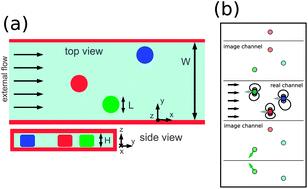
Soft Matter, 2012,8, 10676-10686
https://doi.org/10.1039/C2SM25931A
Static wetting on deformable substrates, from liquids to soft solids
Young's law breaks down for small droplets on soft substrates, depending strongly on the interplay between elasticity and surface tension.
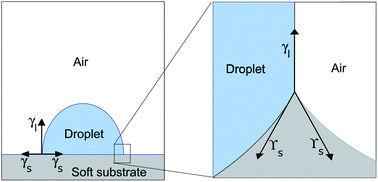
Soft Matter, 2012,8, 7177-7184
https://doi.org/10.1039/C2SM25540E
Out-of-equilibrium forces between colloids
Out-of-equilibrium microstructure and consequent depletion forces are measured between two probe particles held in a strongly driven colloidal suspension.
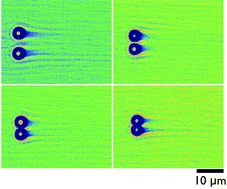
Soft Matter, 2012,8, 3335-3341
https://doi.org/10.1039/C2SM06784F
A systematic study of DNA conformation in slitlike confinement
Various regimes for DNA confined in a slit.
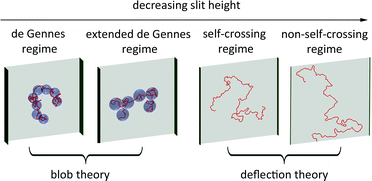
Soft Matter, 2012,8, 2972-2982
https://doi.org/10.1039/C2SM07322F
Nonlinear microrheology of an aging, yield stress fluid using magnetic tweezers
A simple magnetic tweezer technique for probing nonlinear microrheology is described. Micro-scale yield stress measurements are demonstrated on aqueous dispersions of Laponite® clay, and comparisons are made to bulk properties.
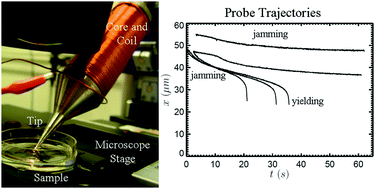
Soft Matter, 2011,7, 9933-9943
https://doi.org/10.1039/C1SM05843F
Soft elastic surfaces as a platform for particle self-assembly
Elastic manifolds can mediate self-assembly of nanoparticles into a variety of aggregates.
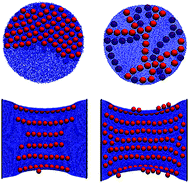
Soft Matter, 2011,7, 8324-8329
https://doi.org/10.1039/C1SM05773A
Adsorption of core-shell nanoparticles at liquid–liquid interfaces
We investigate the adsorption of core-shell nanoparticles at liquid–liquid interfaces. Experiments on the time evolution of the interfacial tension are accompanied by numerical simulations to investigate the structure of the assembly and theoretical modeling aimed at shedding light on the thermodynamics of individual composite nanoparticles at liquid interfaces.

Soft Matter, 2011,7, 7663-7675
https://doi.org/10.1039/C1SM05407D
Micromechanics of colloidal aggregates at the oil–water interface
Micromechanics of colloidal aggregates formed at oil–water interfaces are quantitatively measured using optical tweezers. Micromechanical properties link the interfacial rheology with underlying particle interactions.
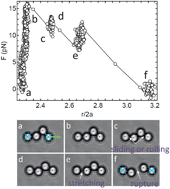
Soft Matter, 2011,7, 7683-7688
https://doi.org/10.1039/C1SM05254C
Attractive interactions between colloids at the oil–water interface
Attractive and repulsive interaction forces between charged spherical latex colloids are directly measured using optical tweezers.
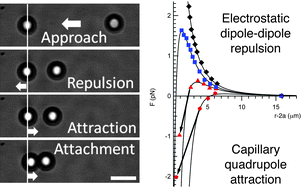
Soft Matter, 2011,7, 7676-7682
https://doi.org/10.1039/C1SM00005E
Electro-creasing instability in deformed polymers : experiment and theory
Electro-creasing instability occurs in a polymer film under a high enough voltage. Biaxially pre-stretching the film greatly increases the critical voltage for the instability.
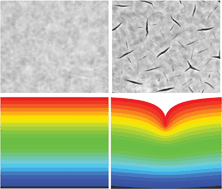
Soft Matter, 2011,7, 6583-6589
https://doi.org/10.1039/C1SM05645J
About this collection
Soft Matter
This collection highlights winners of the Soft Matter Lectureship. This annual award was established in 2009 to honour an early-stage career scientist who has made a significant contribution to the soft matter field. The 2023 Soft Matter Lectureship was awarded jointly to Qian Chen (University of Illinois at Urbana-Champaign) and Andela Saric (Institute of Science and Technology Austria).
Qian Chen is currently an Associate Professor and Racheff Scholar in the Materials Science and Engineering Department at University of Illinois at Urbana-Champaign (UIUC). She obtained her PhD from the same department with Prof. Steve Granick (2012) and did her postdoc with Prof. Paul Alivisatos at UC Berkeley under Miller Fellowship. She joined the faculty of UIUC in 2015 and since then has received awards for the research in her group including Victor LaMer award in ACS (2015), Forbes 30 under 30 Science List (2016), Air Force Office of Scientific Research YIP award (2017), National Science Foundation CAREER award (2018), Sloan Research Fellow in Chemistry (2018), Unilever award in ACS (2018), the Hanwha-TotalEnergies IUPAC Young Scientist Award (2022), and the Soft Matter lectureship (2023). The research in her group focuses on the broad scheme of imaging, understanding, and engineering soft materials at the nanoscale, including systems such as colloidal self-assembly, protein aggregation, advanced battery devices, and energy-efficient separation strategies.
Andela Saric is a Professor at the Institute of Science and Technology Austria, located in the woods just outside of Vienna. Andela obtained a PhD in Chemical Physics from Columbia University in New York in 2013, followed by an HFSP Postdoctoral Fellowship at the University of Cambridge. She started her research group at University College London in 2016, between the Department of Physics and Astronomy and MRC Laboratory for Molecular Cell Biology, before moving to Vienna in 2022. Her lab develops computer models at the interface of soft matter physics, physical chemistry, and life sciences, with a particular focus on protein self-organisation and cell reshaping far from thermodynamic equilibrium. She is an EMBO Young Investigator, and a recipient of the ERC Starting Grant and the Royal Society University Research Fellowship.
This collection features articles published in Soft Matter from Professors Chen and Saric, as well as previous lectureship winners:
2022 – Xuanhe Zhao, MIT, USA
2021 – Silvia Marchesan, University of Trieste, Italy
2020 – Valeria Garbin, Delft University of Technology, The Netherlands
2019 - Tim White, University of Colorado Boulder, USA
2018 – Susan Perkin, University of Oxford, UK
2017 - Daeyeon Lee, University of Pennsylvania, USA
2016 – Damien Baigl, Ecole Normale Supérieure, Paris, France
2015 – Lucio Isa, ETH Zürich, Switzerland
2014 – Eric Dufresne, Yale Univeristy, USA
2013 – Eric Furst, University of Delaware, USA
2012 – Patrick Doyle, MIT, USA
2011 – Michael J. Solomon, University of Michigan, USA
2010 – Bartosz Grzybowski, UNIST, Republic of Korea
2009 – Emanuela Zaccarelli, University of Rome, Italy